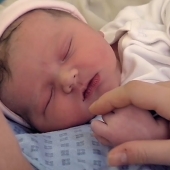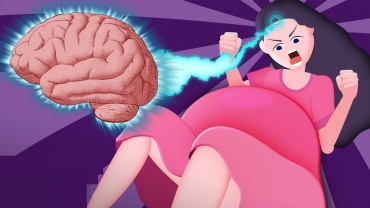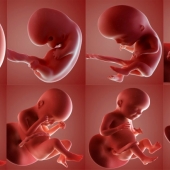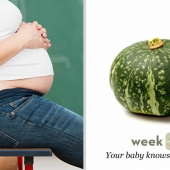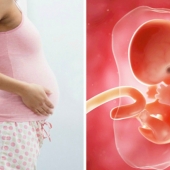What happens in the 36th week of pregnancy? Your baby's reached a bouncing good size by now, weighing around 2.6kg. He's over a foot-and-a-half long from head to toe now, too, at around 47cm. He'll also begin to reabsorb some of the amniotic fluid that surrounds him.
Your baby in the 36th week of pregnancy:
- By the end of this week, the enlarged fetus occupies almost the whole abdominal cavity
- Height of your baby is 18.66 inches and he weighs 5.78 pounds
Your baby at this point is gaining less than an ounce a day
- She/he barely makes any movement as it is constricted by the abdominal muscles
- Doctors and mothers can now clearly identify the probable position of the baby upon delivery
- If the baby is facing an upright position, your healthcare provider may perform an External Cephalic Version procedure where the doctor tries to make the fetus move by pushing your tummy using their hands and being guided by an ultrasound.
- This is to aim reversing the position of the baby
- If the baby is positioned breech, cesarean section is performed
- Your little ones bones are still flexible and his well-designed head is featuring ingenious floating skull plates that overlap to allow the head to compress on the way out
- Blood circulation has been fine-tuned and the immune system is set to do battle with germs outside the womb
- Your baby's digestive system is ready to accept liquid food as he/she gets all his nutrition and oxygen from the placenta
Your body in the 36th week of pregnancy:
Just try not to overdo it and wear yourself out. You might continue to notice several of the typical late-pregnancy symptoms.
Your cervix might start to dilate in the weeks, days, or hours before the birth of your baby. Every woman and even every pregnancy is different.
Joints and tissues in your body continue to soften and loosen as your body prepares for your baby's birth. This might be especially significant in your pelvic area.
You might continue to feel hip pain on one side or lower-back pain.
Braxton-Hicks contractions might become more frequent as you edge closer to your due date. Remember, these practical contractions play in an important role in helping your body rehearse for childbirth.
You might notice more practice contractions after physical activity or if you are not getting enough fluids.
- 470 views


